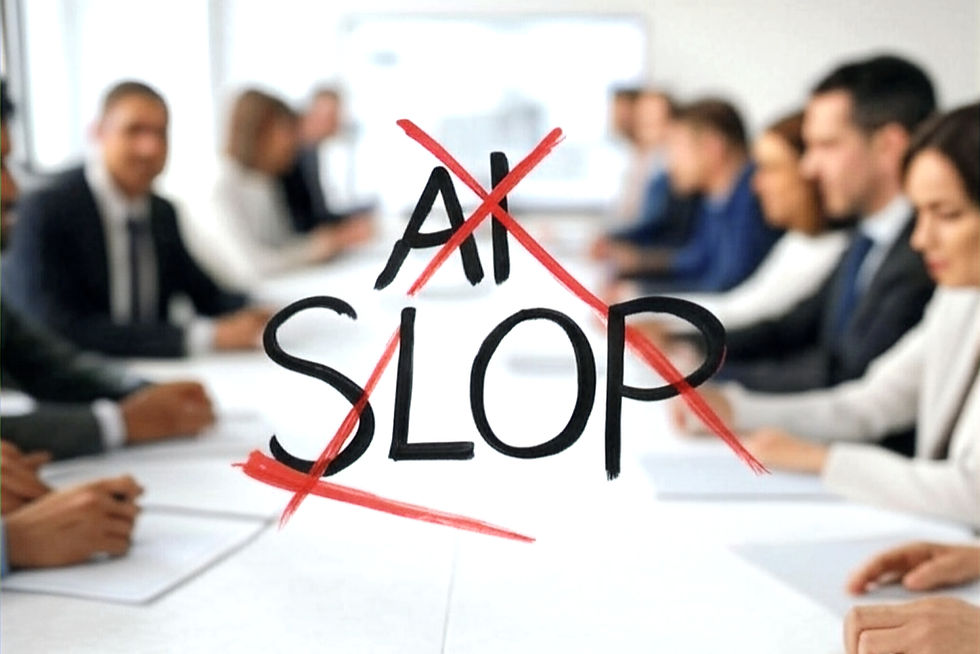Artificial Intelligence (AI) has revolutionized content creation, enabling businesses and individuals to generate text, images, and videos at an unprecedented speed. However, this rapid advancement has led to the emergence of a new phenomenon: AI Slop. The term refers to low-quality, often nonsensical, AI-generated content that floods the internet, diminishing the quality of search results and making it difficult to find valuable information.
In this article, we’ll explore the rise of AI Slop, its impact on content quality, how it affects SEO, and what users can do to differentiate between high-value AI content and junk.
What is AI Slop?
AI Slop refers to poorly generated, low-value content produced by artificial intelligence with minimal human oversight or quality control. This includes articles, social media posts, videos, and even images that lack depth, coherence, and originality.
Some common characteristics of AI Slop include:
Repetitive, generic, or nonsensical text
Keyword stuffing and poor SEO practices
Misinformation or lack of factual accuracy
Overuse of AI-generated stock images and videos
Minimal human editing or verification
While AI has the potential to produce high-quality content, the misuse of AI tools by inexperienced users or spam-driven websites has contributed to an overwhelming amount of low-quality material online.
The Growing Problem of AI Slop
1. AI Slop in SEO & Search Engine Rankings
Search engines like Google prioritize high-quality, authoritative content in search rankings. However, the rise of AI-generated content has created an influx of spam-like material, making it harder for search algorithms to filter out low-value articles.
Google’s Helpful Content Update aims to tackle AI Slop by penalizing sites that publish AI-generated spam. Websites that rely heavily on AI-generated, unedited content may see a drop in rankings as search engines adjust their algorithms to prioritize human-like, engaging, and informative content.
2. Social Media Overload
AI-generated content has also found its way onto social media platforms, where automation tools generate posts, tweets, and comments at scale. Many accounts use AI to produce engagement bait—low-effort posts that drive clicks without providing real value. This phenomenon makes social media feeds cluttered with irrelevant or misleading content.
3. The Decline of Human-Crafted Content
With the influx of AI Slop, high-quality human-created content is being overshadowed. Many content creators and journalists are now competing against machine-generated material that can be produced at a fraction of the time and cost. As a result, unique and well-researched content is becoming harder to find.
4. AI-Generated News & Misinformation
One of the biggest concerns with AI Slop is the spread of misinformation. Many AI content generators pull from outdated or inaccurate sources, leading to the creation of misleading articles. Without human fact-checking, AI-generated content can perpetuate false information, making it difficult for readers to separate truth from fiction.
How to Identify AI Slop
As AI-generated content becomes more prevalent, it’s important to recognize and avoid AI Slop. Here are some key signs:
Lack of Originality – AI-generated articles often contain generic information, with no unique insights or perspectives.
Poor Grammar and Structure – While AI has improved in text generation, some AI models still produce awkward phrasing, unnatural sentence structures, or grammatical errors.
Repetitive Keywords – AI Slop often overuses keywords unnaturally in an attempt to rank higher in search engines.
Lack of Verified Sources – If an article lacks citations or references to reputable sources, it may be AI-generated junk.
Too Perfect Formatting – AI-generated text may have flawless paragraph structures and subheadings but little meaningful substance.
Overuse of AI Stock Images – AI Slop often relies on generic AI-generated images that look artificial or irrelevant to the content.
How to Avoid AI Slop in Your Content Strategy
To ensure that AI content remains high-quality, follow these best practices:
1. Use AI as a Tool, Not a Replacement
AI should augment human creativity, not replace it. Use AI for research, brainstorming, and automation, but ensure that human oversight refines and improves the content.
2. Prioritize Human Editing and Fact-Checking
Before publishing AI-generated content, thoroughly edit and fact-check the material. AI is prone to errors, and human intervention is necessary to maintain accuracy.
3. Focus on Unique Value
Create content that provides unique insights, experiences, and expert opinions. AI-generated text should enhance human storytelling rather than replace it.
4. Avoid Keyword Stuffing
Keyword stuffing makes content sound robotic and can harm SEO rankings. Use natural keyword placement and write for humans first, search engines second.
5. Be Transparent About AI Use
If using AI-generated content, be transparent with readers. Many reputable websites now disclose when content has been assisted by AI to maintain trust with their audience.
6. Choose High-Quality AI Tools
Not all AI generators produce the same results. Opt for advanced AI models that prioritize readability and coherence over volume. Examples include OpenAI’s GPT models, Claude, and other AI-driven tools with a reputation for quality.
The Future of AI Content: Will AI Slop Get Worse?
As AI technology advances, it’s likely that AI-generated content will improve. However, the risk of AI Slop remains high as long as content farms and low-quality publishers prioritize quantity over quality.
Search engines and social platforms will continue refining algorithms to combat AI-generated spam, meaning that businesses and content creators who invest in high-quality AI-assisted content will have a competitive advantage.
Conclusion
AI Slop is a growing issue that threatens the integrity of online content. While AI is an invaluable tool for content creation, its misuse has led to a flood of low-quality material that dilutes search engine results and social media feeds.
To stay ahead, businesses and content creators must prioritize human oversight, originality, and factual accuracy. By leveraging AI responsibly, we can maintain the quality of digital content while reaping the benefits of AI-powered efficiency.

_edited.jpg)


_edited.jpg)
_edited.jpg)

_edited.jpg)

